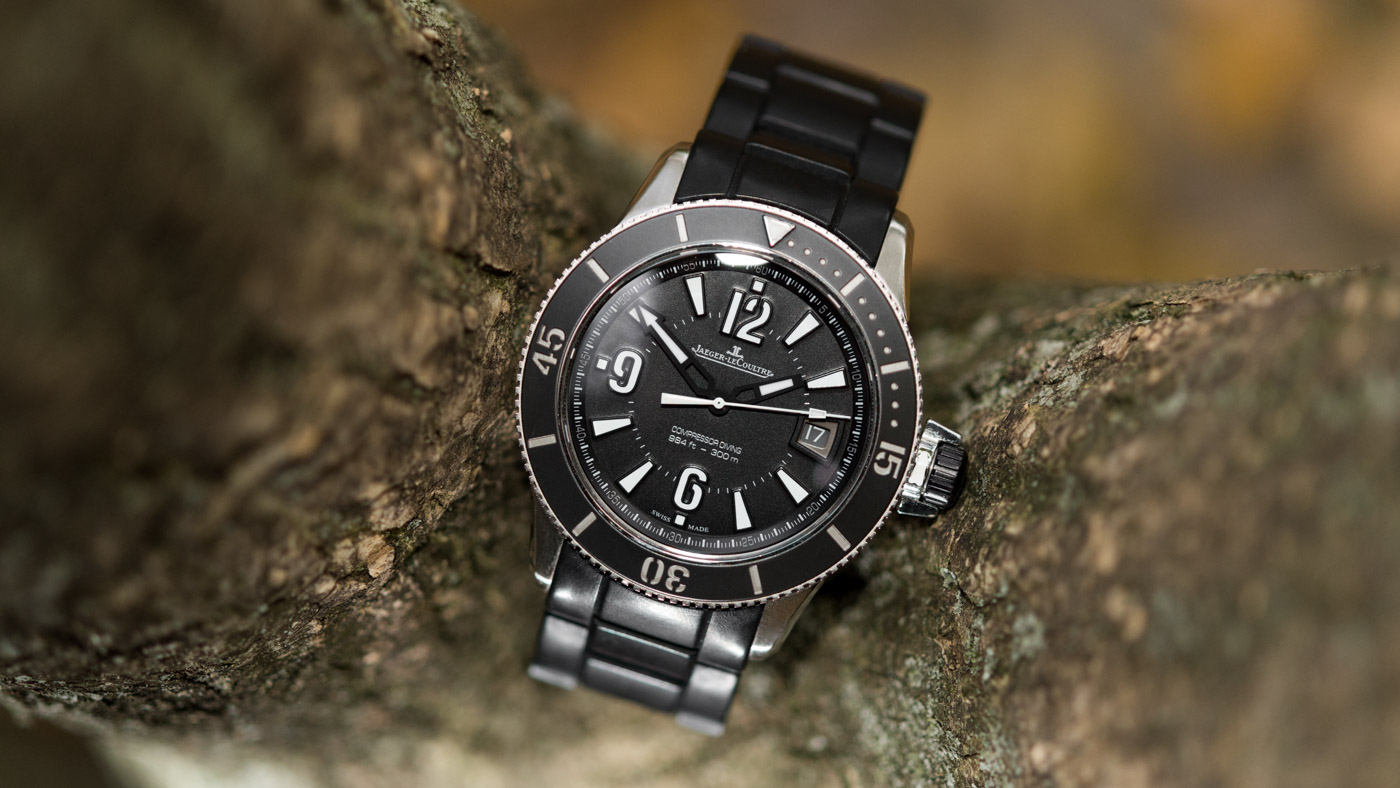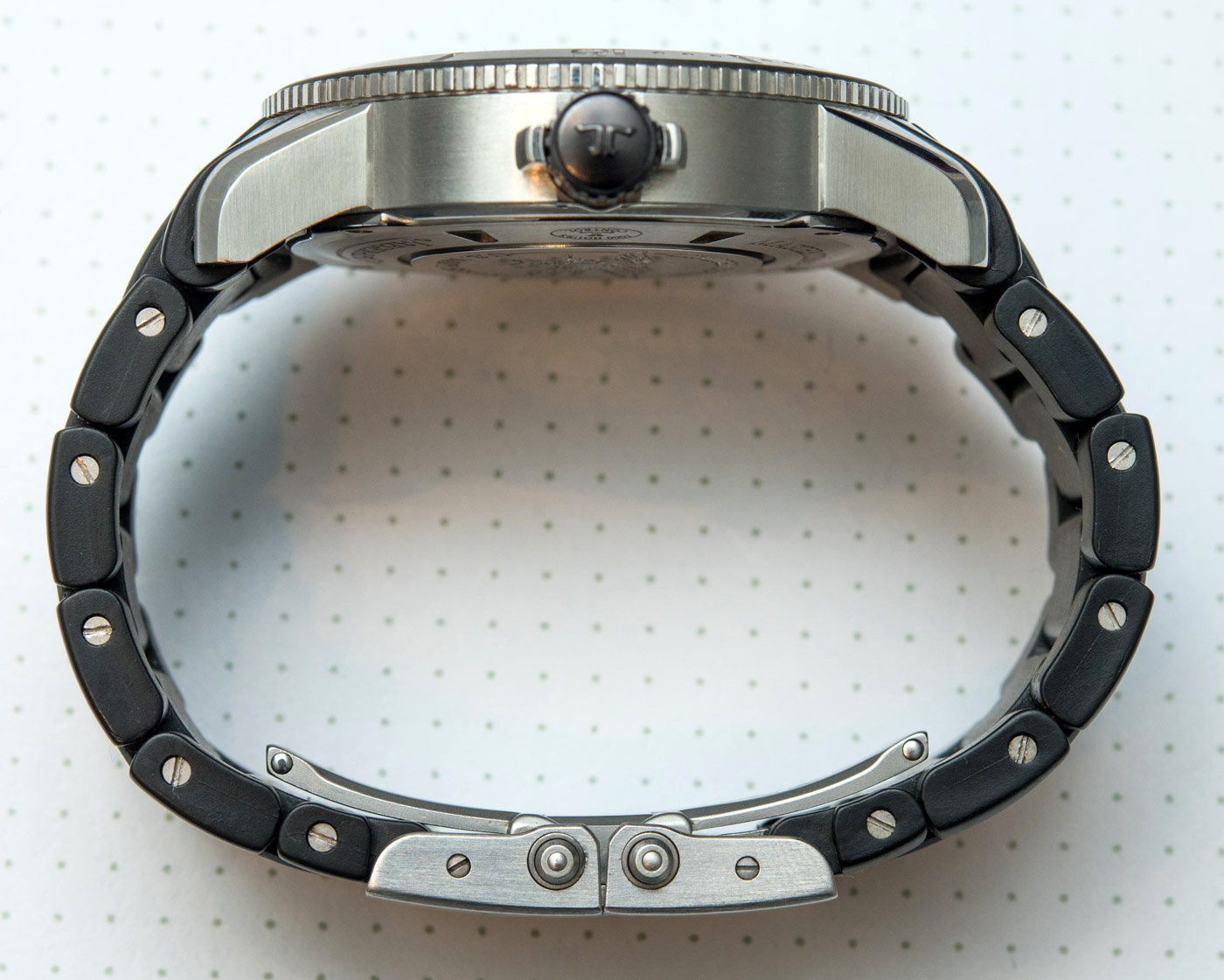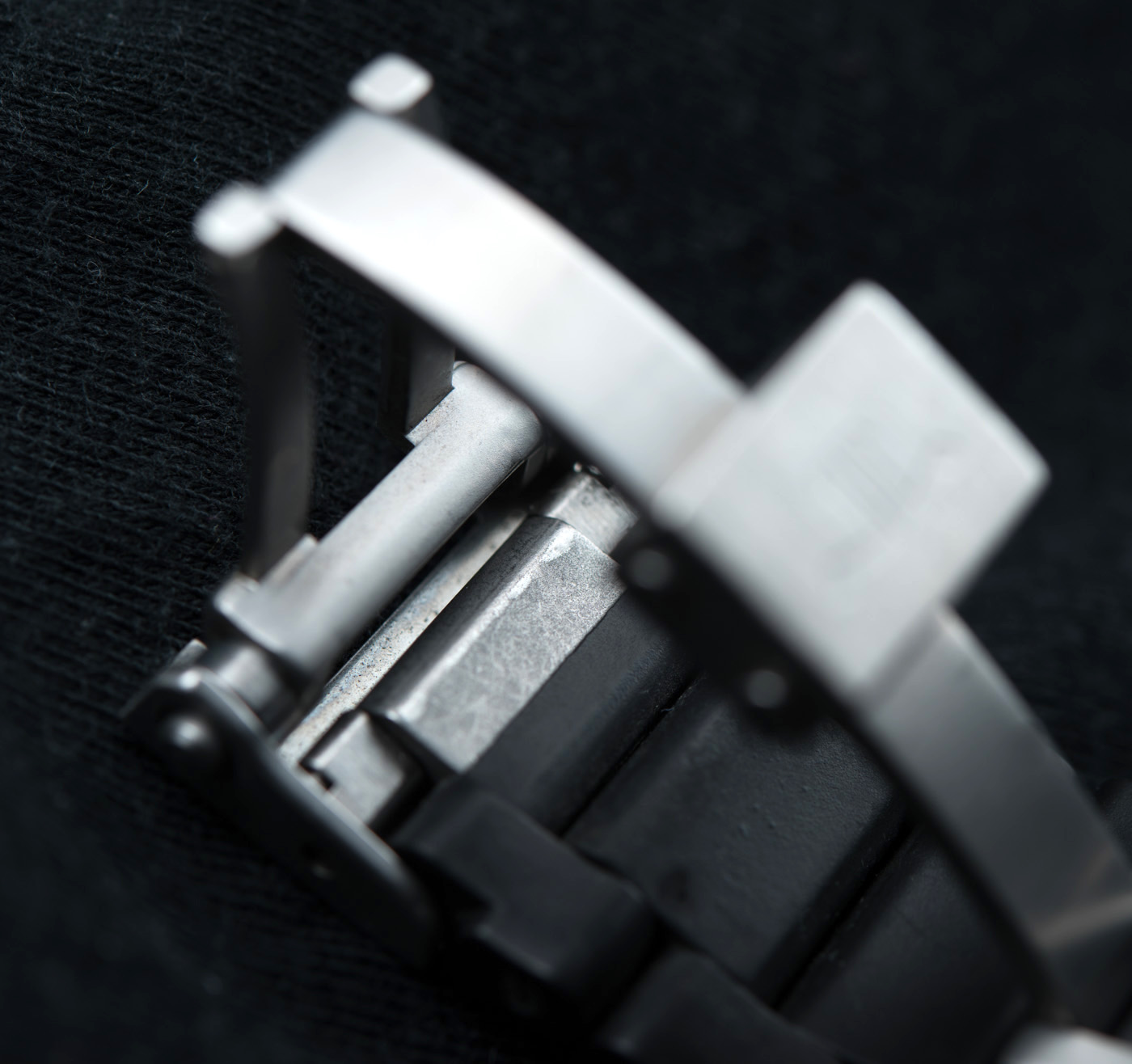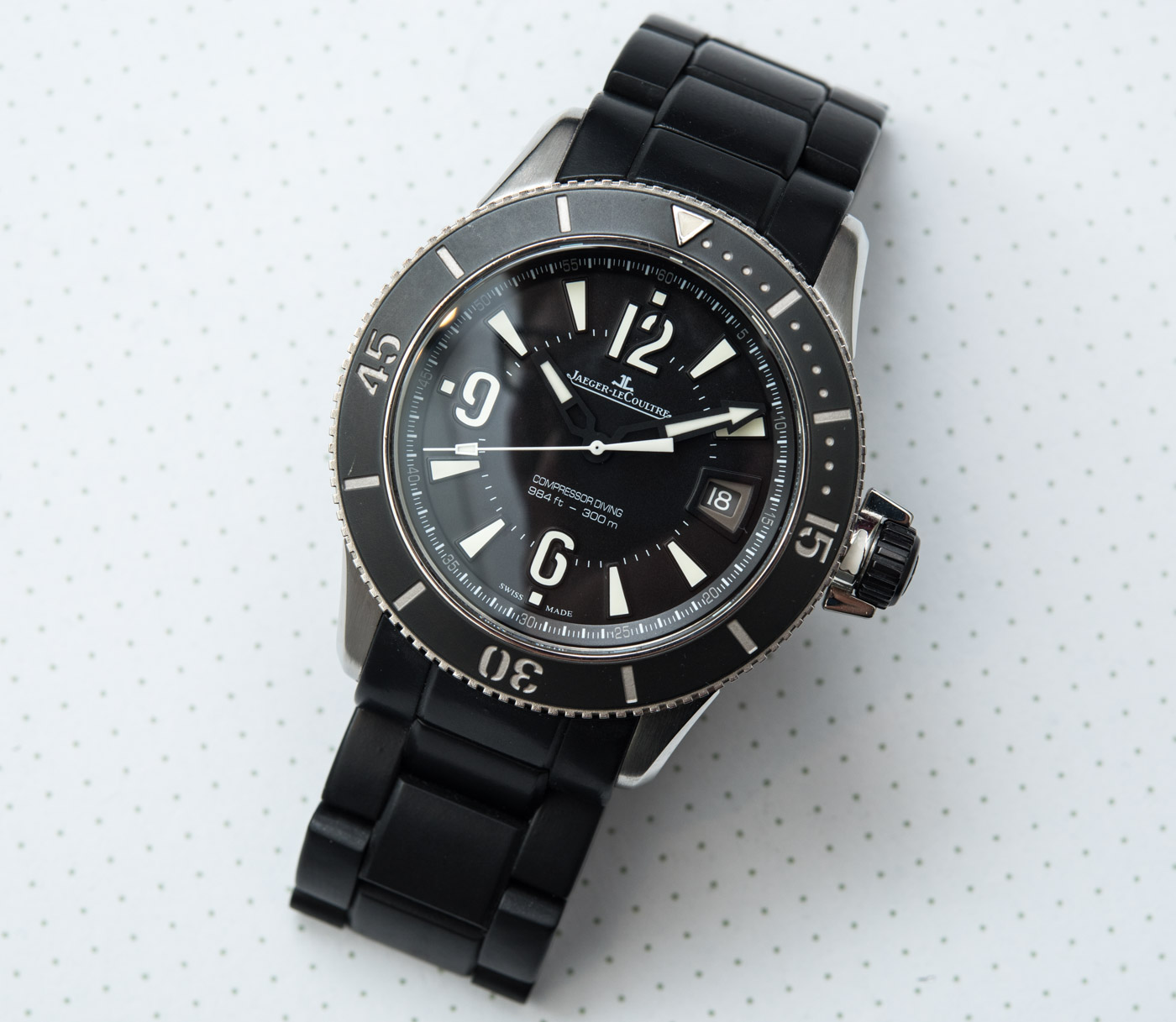
Did you know the Master Compressor was dead?! Now that I have your attention, let me begin this review with the lines I originally wrote, just before visiting JLC’s official website to check what was up (or down…) in their men’s section. Before that shocking news, this is how I originally wanted to start: after all that palaver here, but also here, I decided to put my money where my mouth is and buy myself a Jaeger-LeCoultre that I not only liked, but that was of the breed I have been seeing killed off from the brand’s identity in recent years. The watch that I picked is the Jaeger-LeCoultre Navy SEALs Automatic or, as it’s officially called, the Master Compressor Diving Automatic Navy SEALs. But everyone calls it the Jaeger-LeCoultre Navy SEALs Automatic. I’d hate myself if I forgot, so I’ll take this moment to give a special shout out to the kind people over at TheWatchBox.com for hunting one of these watches down for me to buy, on this particular bracelet, in neat condition, as a full set – I appreciate their help.
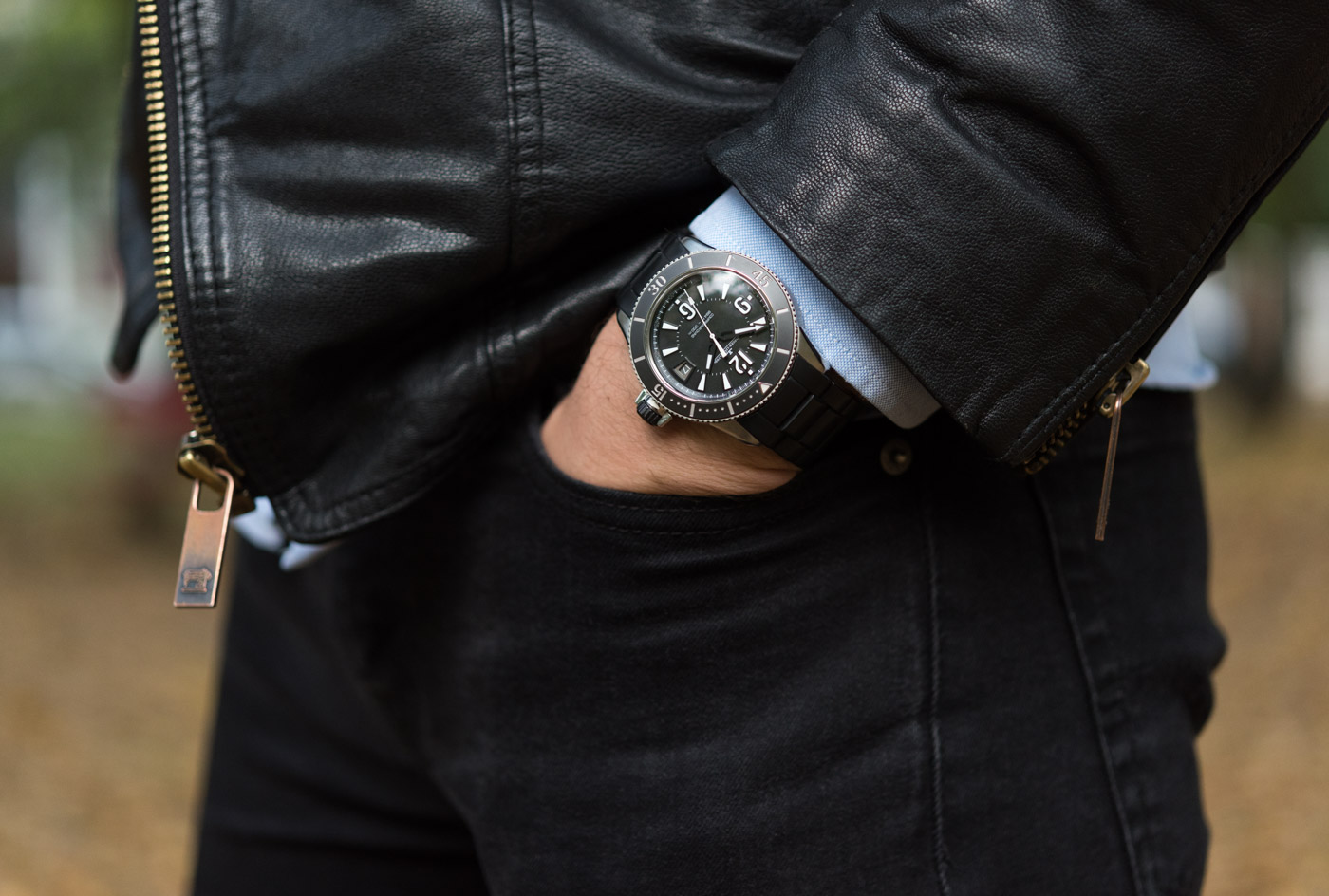
Some Disclaimers
The last thing I feel I should note before we move onto the review itself is that for the full picture on the reasoning behind this purchase, as well as a lot of the background on what I am about to say in this review, can be found in those two articles that I have linked to in the intro paragraph. There are so many amendments and pros and cons to the matter that all my criticisms are a real tightrope walk between saying what I want but remaining correct with the brand that I like and with those fellow watch enthusiasts who like it for different reasons. Hence, I wish to spare myself, as well as all those who have read said articles, going through all those detailed explanations again. Those two articles contain what I consider to be some important points about the recent past, as well as the present of Jaeger-LeCoultre, and I wish that you accept my invitation to read those before continuing here. Anyhow, here we go.
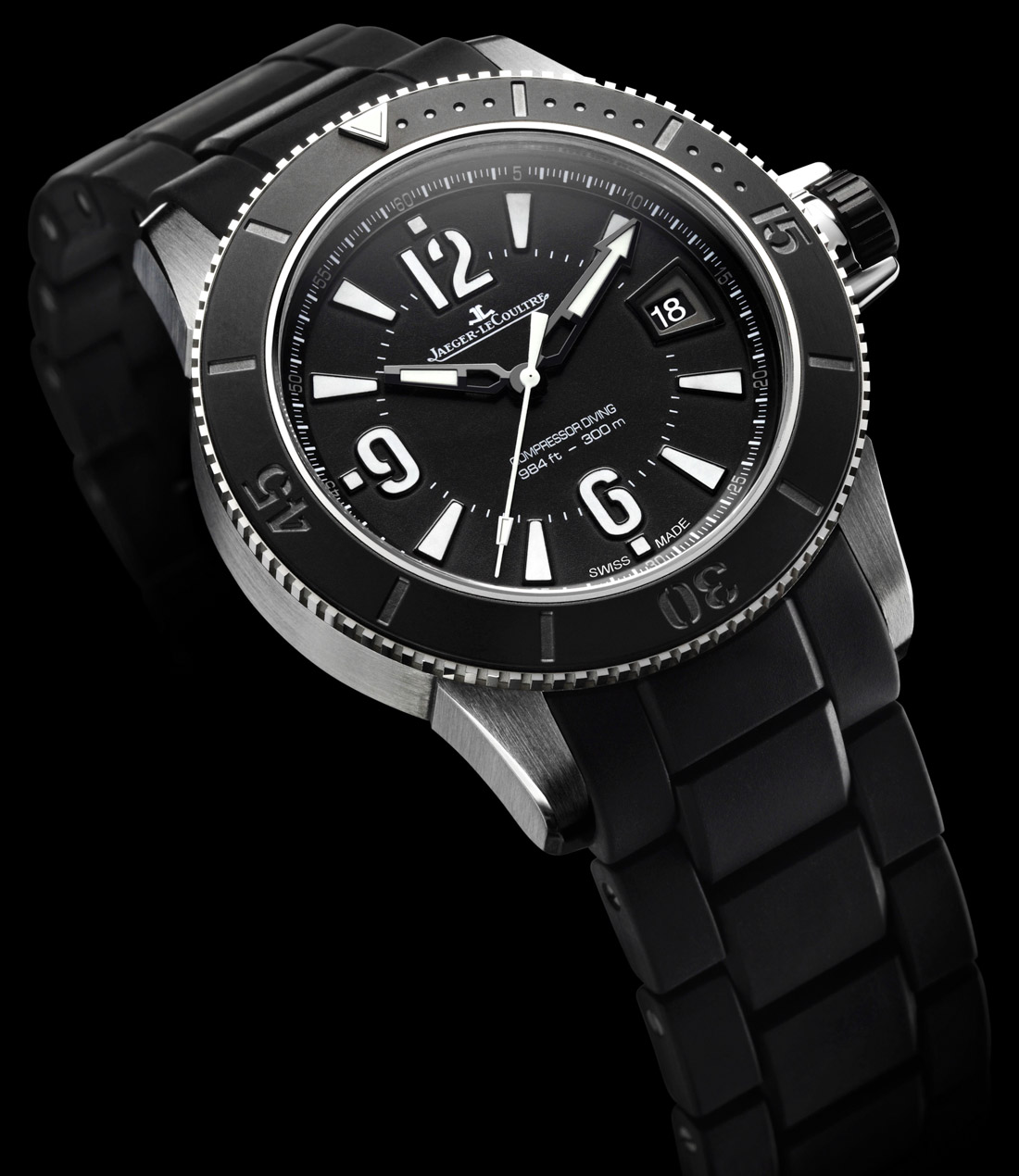
What Grinds My Gears
As I was digging through old JLC press kits and stuff from the late ’00s to prove the point I was trying to make in one of those aforementioned articles, I stumbled upon this piece, the Master Compressor Diving Automatic Navy SEALs, or, as it’s more often called, the Navy SEALs Automatic. Immediately upon re-acquainting myself with it, I knew it was going to be the next watch for me to get. Why? In essence, because the Navy SEALs Automatic is a watch that shares what I consider to be a highly productive and very exciting period in the modern history of the brand. It was an era of cool Master Compressors, watches made in actual, real-world collaboration with Aston Martin, the Navy SEALs and explorers, an era of Extreme LABs (how cool is that?) and high complications that pushed the envelope… And, surprise-surprise, an era almost entirely free from any sort of tame, self-aggrandizing, and truly excessive vintage-tribute-iconic-heritage-jubilee-anniversary conformism in copy-paste watch design. It was a time when the 2-4 year product plans were all about “What shall we do next?” and not “What is it that we have done ages ago that has an anniversary coming that’s 5-divisible?”

I promised not to repeat myself but I feel I should, at least briefly – albeit by omitting some important amendments and side notes that I have added in other articles. What I’m trying to say is that where other brands leave me dead cold with their saturation dive into their own archives to the detriment of everything else, I do care about JLC doing it and abandoning its creative and innovative self (basically to an absolution, at this point in the affordable segment). Because, again, a brand with over 1,200 different calibers and hundreds of patented and countless many more otherwise unique inventions shouldn’t spend several years not producing anything that would tick both boxes of being affordable and refreshing. Looking at what the brand’s been up to lately, it’s become “pick either one” – and often neither.

To be clear, again, I don’t mean every watch has to be as bonkers as those I mentioned a bit further above. I understand the importance of generic looking – the kind word I guess would be “versatile” – collections and watches that can be sold to those who don’t need or want anything more than a boring safe watch with a fancy name on it. However, haven’t we seen far too many of those lately from Jaeger-LeCoultre – and most everybody else? I think we have and I certainly know that I have. And because there’s nothing sexy or unique or special to these watches, but the brand understands they have to add some story to it, what we get is endless and extremely tiresome dwelling on past achievements, most of them attained at a time their current target audience hadn’t even been alive yet. The shockingly disproportioned and sleep-inducing stale Polaris Automatic, the quickly fading Geophysic, or the “hey, here’s a new-old dial color for this Reverso Tribute”… At this point, there is literally nothing that was fully designed in and designed for anyone or anything of this decade in the affordable selection of Jaeger-LeCoultre. There are cool tourbillons and stuff, but yeah, those hardly make any difference for most of us.
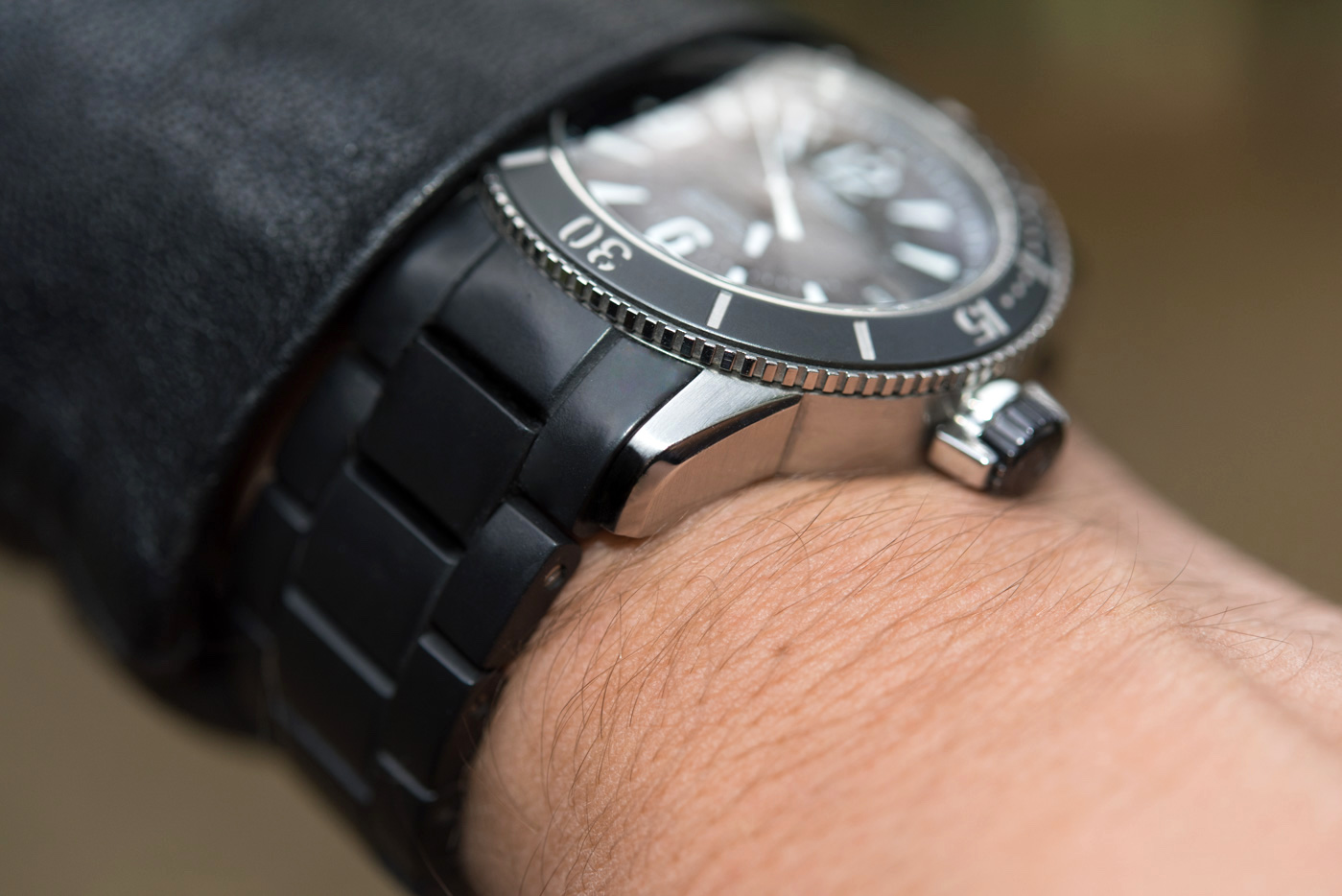
And, you see, that was precisely the bloody point of Jaeger-LeCoultre until but a few years ago. That it was a cool ass brand that had it all: the fancy name (as expected from a luxury brand) but, rather more importantly, the outstanding history, remarkable variety of collections, novel and identifiable designs and engineering solutions, high quality of execution and, overall, a constantly renewing range of cool-without-trying watches. Because if you didn’t know what you were doing, you got yourself the watch James Bond wore and that said 007 on the dial a million times… But if you did know what’s what, you got yourself a Jaeger-LeCoultre. Now, all that’s replaced by a Polaris that I won’t repeat my full-article rant about here (it’s linked to above) and so on and on it goes. Even the Duomètre, albeit rather more expensive, is over a decade old now (did you know?) and the brand has apparently been at a total loss when it comes to deciding what to do with it. And so the low-to-mid-high-end range is completely gone when it comes to genuinely novel solutions.

The Actual Review Of The Jaeger-LeCoultre Navy SEALs Automatic
This leads me to the Navy SEALs Automatic, a watch originally launched at SIHH 2010… I wish it was launched somewhere more, ehm, badass than that. When debuted, here’s what Jaeger-LeCoultre had to say about this watch: “In direct line from the tradition of Jaeger-LeCoultre military watches, the Navy SEALs® watches are able to withstand the extreme conditions of the missions accomplished by the US Navy’s elite special operations force.”

I’ll happily leave it up to your own discretion whether or not you get excited by products designed for use scenarios you yourself will never even get close to in a lifetime. But for those who are like me, and love this sort of stuff, we are left with two options – and the Jaeger-LeCoultre Navy SEALs Automatic showed me the second, alternative way that I had not known existed before. In my prior experience, all noteworthy products designed in collaboration and/or for professionals had to be made to the smallest detail to comply with their requirements – any deviation or shortcoming I’d consider a major problem that would render said exercise pointless, really. The Navy SEALs Automatic showed an alternative method what I’d call a very “Swiss” way of delivering a product conceived under such circumstances.

The story goes that upon testing the prototype watches, the Navy SEALs had two major complaints and feedback about the watch: first, the bezel would fall out too easily and needed to have a much more secure fit. Secondly, the case was way too shiny with all the polished surfaces, attracting too much attention. So what did Jaeger-LeCoultre do? They brushed the top of the lugs and the case profile, but left wide, deep-polished bevels on the lugs, i.e. on all four corners of the watch. In the last number of months that I’ve had this month, every damn time that I happen to look at how the lugs are designed, I’m reminded of how they were asked to make this non-reflective – and yet someone at Jaeger-LeCoultre was like: “Nah. We’ll make the lugs pretty because that’s what we do. The Navy-who, anyway?” This puts a smile on my face every time I see these lugs and imagine this conversation going down at JLC – who then produced 1,500 watches with polished lugs, because some penguins or seals or whatever certainly don’t have a sniff at what real luxury is! I absolutely adore this subtle flip-off detail in the watch.
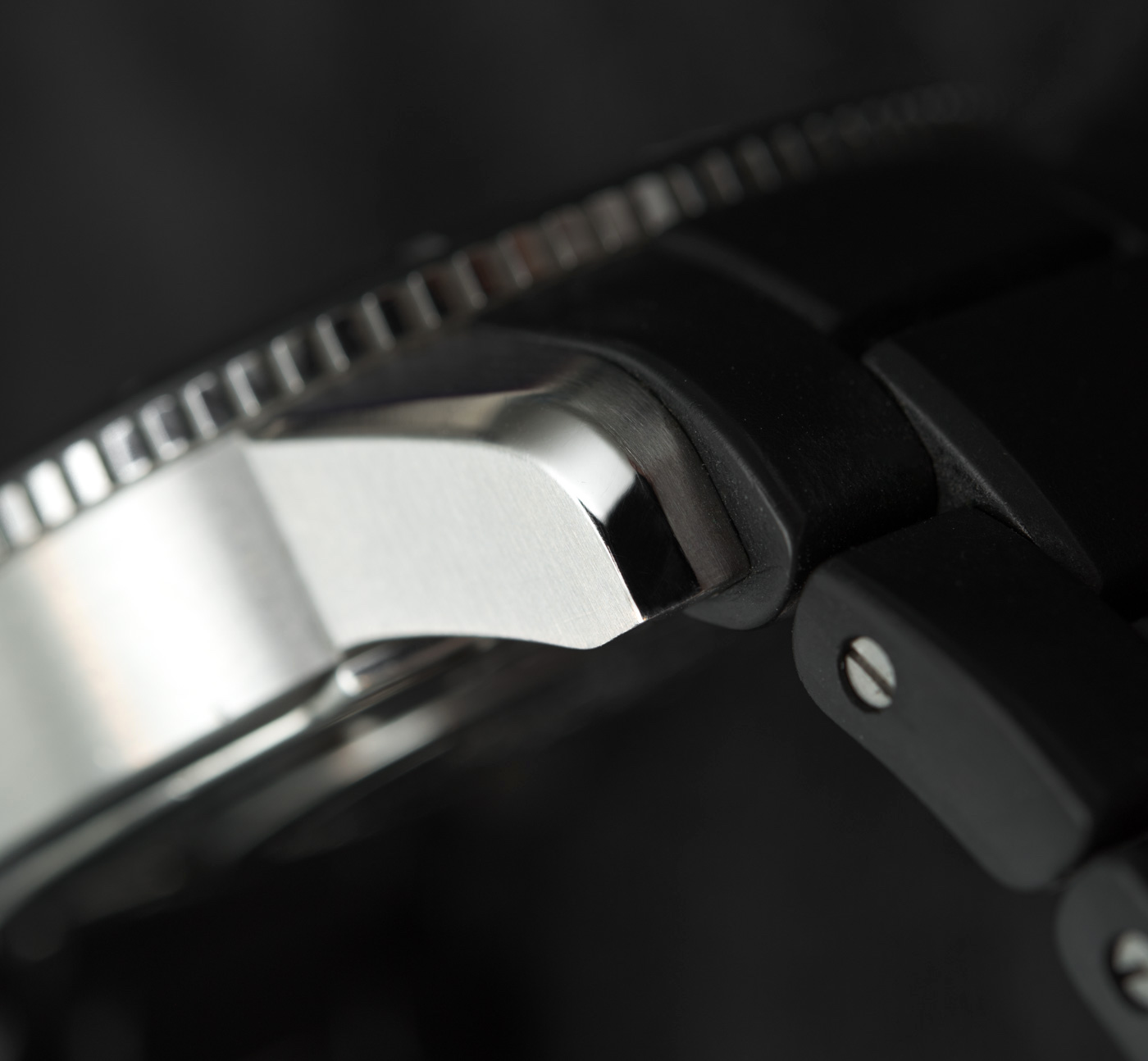
Case, Crown
The Jaeger-LeCoultre Navy SEALs Automatic comes in a stainless steel case that is 42mm wide, 12.75mm thick, has a 60-click, unidirectional stainless steel bezel with a black ceramic insert with some sharp-looking cut-outs for the diving timer, as well as a lumed pip. The crown is Jaeger-LeCoultre’s “compression key” design that Master Compressor owners will be familiar with: just half a turn of the crown guard sets the crown free to be pulled out for setting the date and time or to wind the movement. When unlocked, it shows red arrows that get your attention and give you the direction you should rotate the compression key to safe-lock the crown and re-establish the rated 300m resistance. Neat design that works like new on this 8-year-old watch.
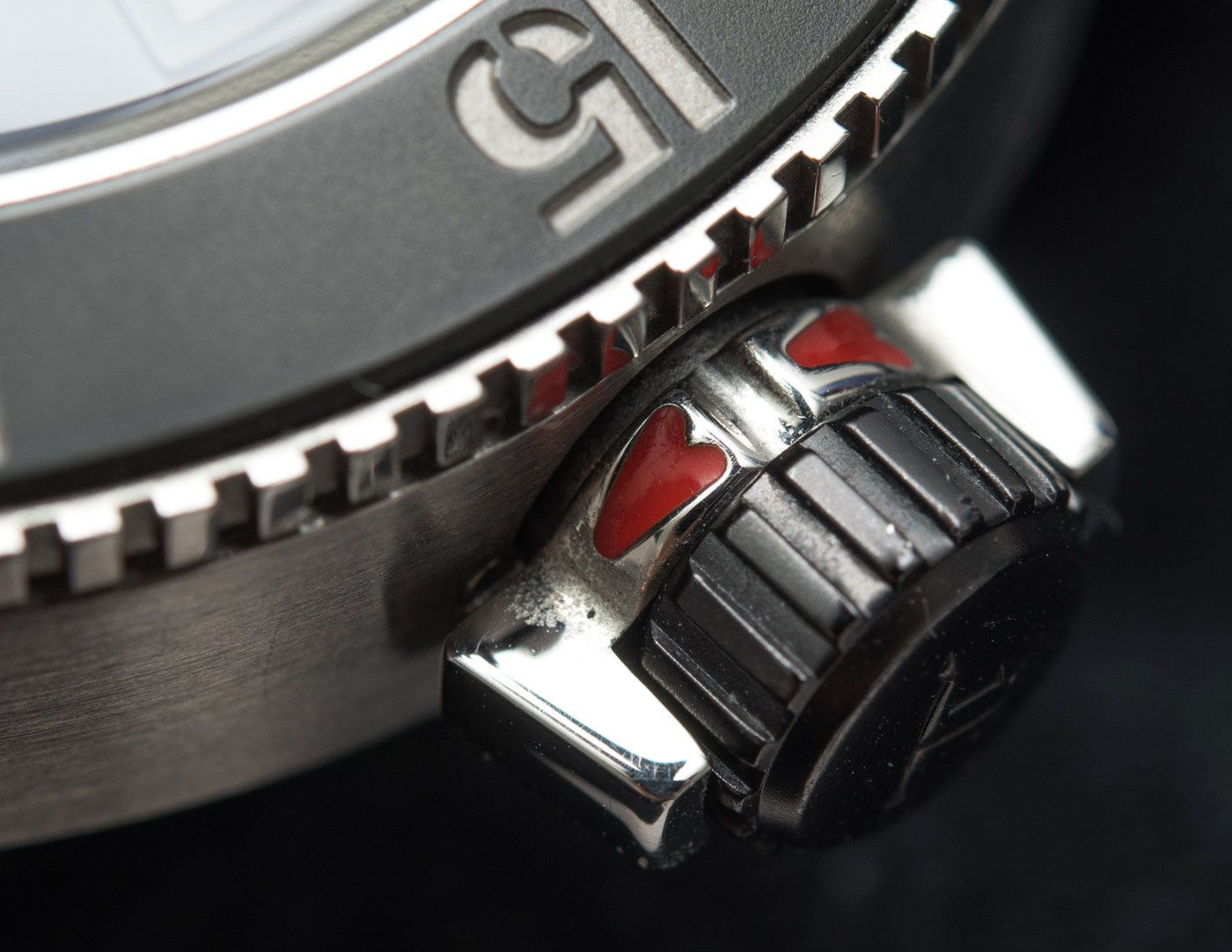
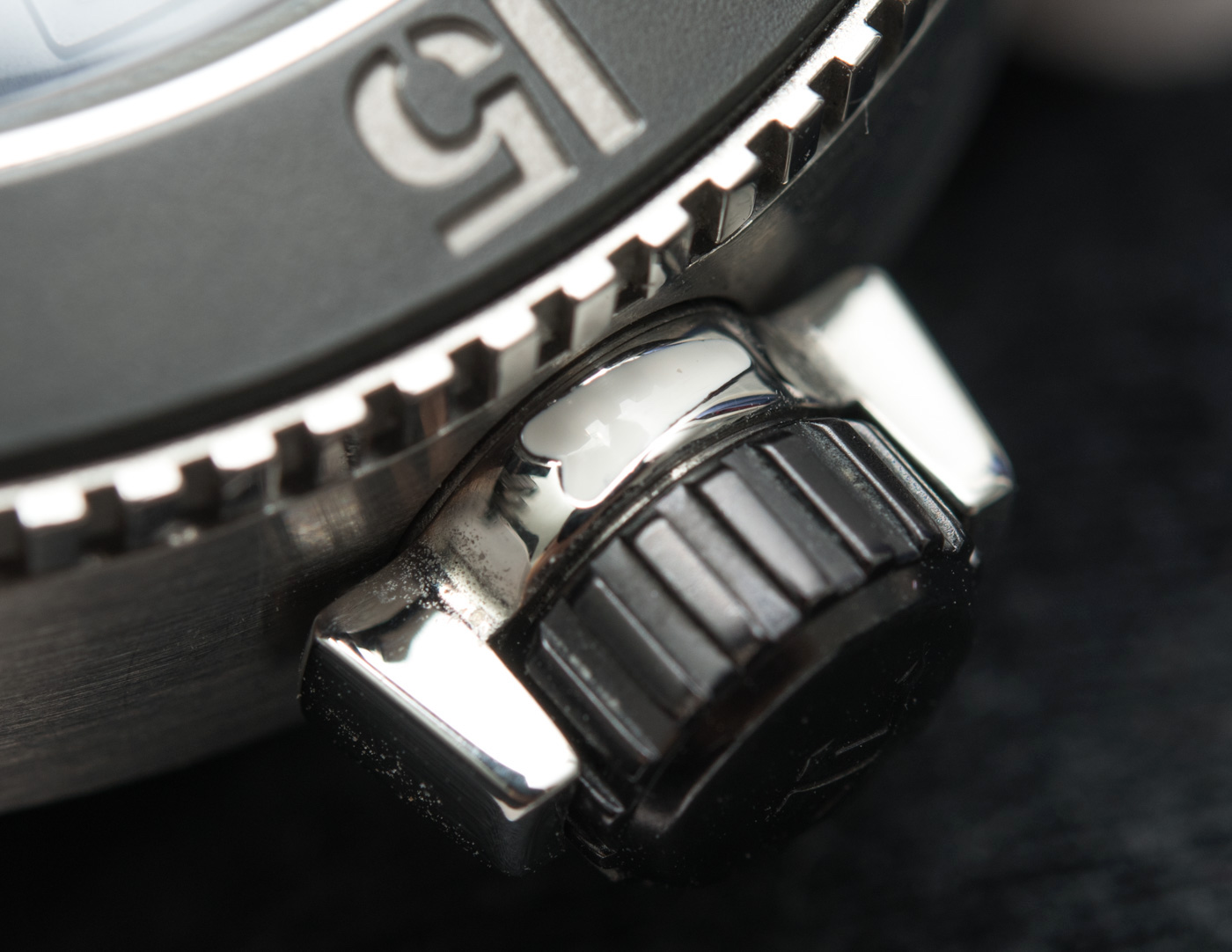
I especially appreciated how the crown worked so accurately when setting the time: no wobble or loose feeling from it or the hands that it is setting, and when pushing the crown back to its regular position, the hands do not move or change their position. These are the sort of details Jaeger-LeCoultre should (and thankfully does) get right. A less appreciable detail is the ceramic bezel: I don’t know how, but Jaeger-LeCoultre has apparently managed to create a more delicate, more Swiss ceramic that gets scratched rather more easily. My watch has a small scratch at the 40-minute mark on it, and when hunting for one of these – before TheWatchBox.com helped me find this one – I’ve seen plenty of these watches listed with minor scuffs and marks on their ceramic bezels. The ceramic used here looks matte, as opposed to the shiny ceramic that Rolex, Hublot, Omega and Rado uses, so I’m certain that either the base material or how it’s “cooked” differs from the sort of ceramic that we see on luxury watches these days. This reminds me that this is indeed a delicate, luxury watch that poses as a tool – and has a cool story behind it for us desk divers.
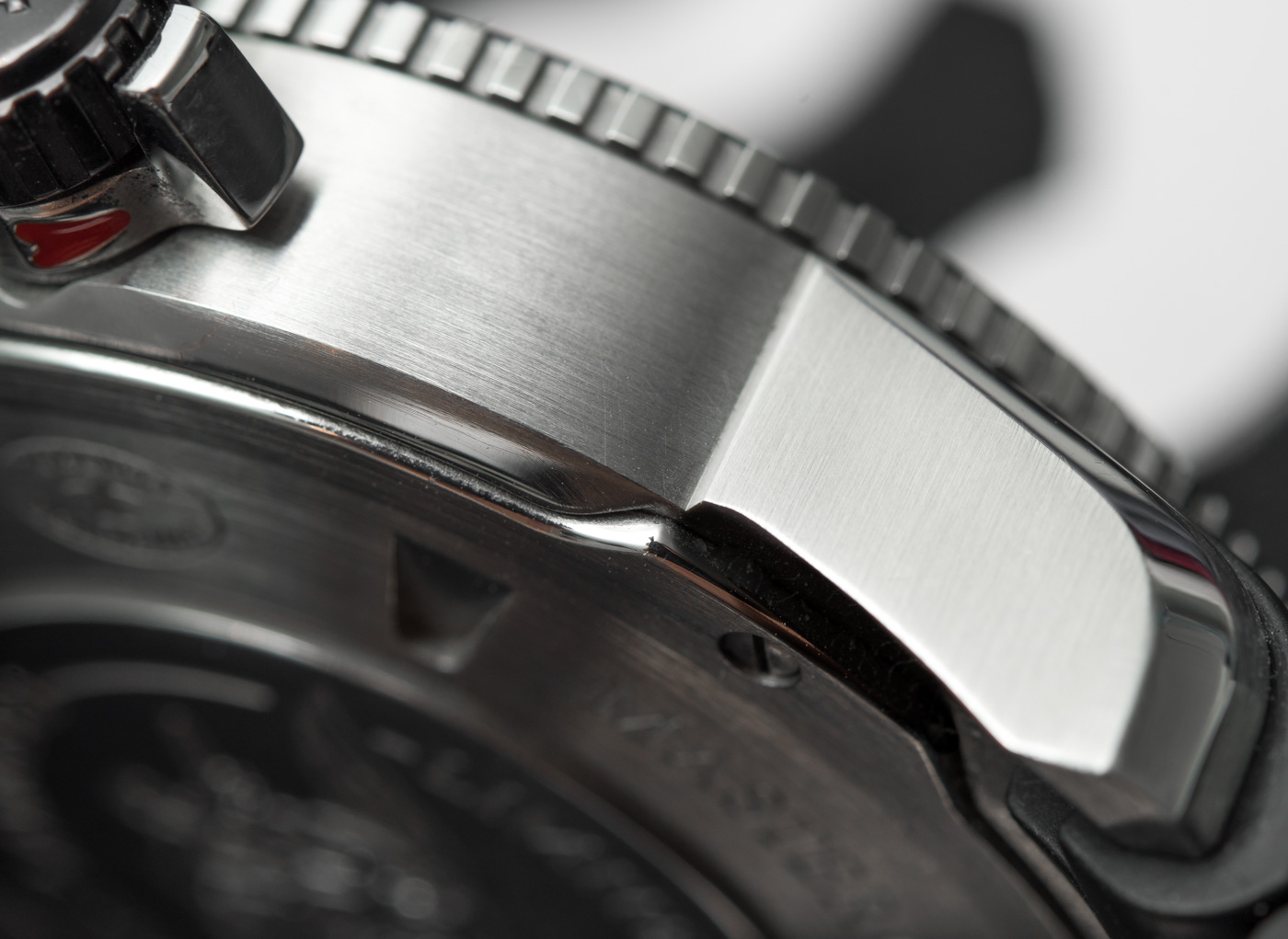
Another neat detail that I can certainly appreciate is how the direction of the brushed surfaces vary between case profile and lug profile. The sides of the lugs are vertically brushed while the case band, as is sometimes called, is horizontally brushed. The very edge of the case-back is beveled and polished, and so is the underside of the case band, making for a neat veneer that accentuates all the brushed, matte-looking parts. While both show attention to detail that one would rightfully expect and so both are welcome additions, I’m slightly more impressed by that polished case-back edge – it’s such a nice touch.
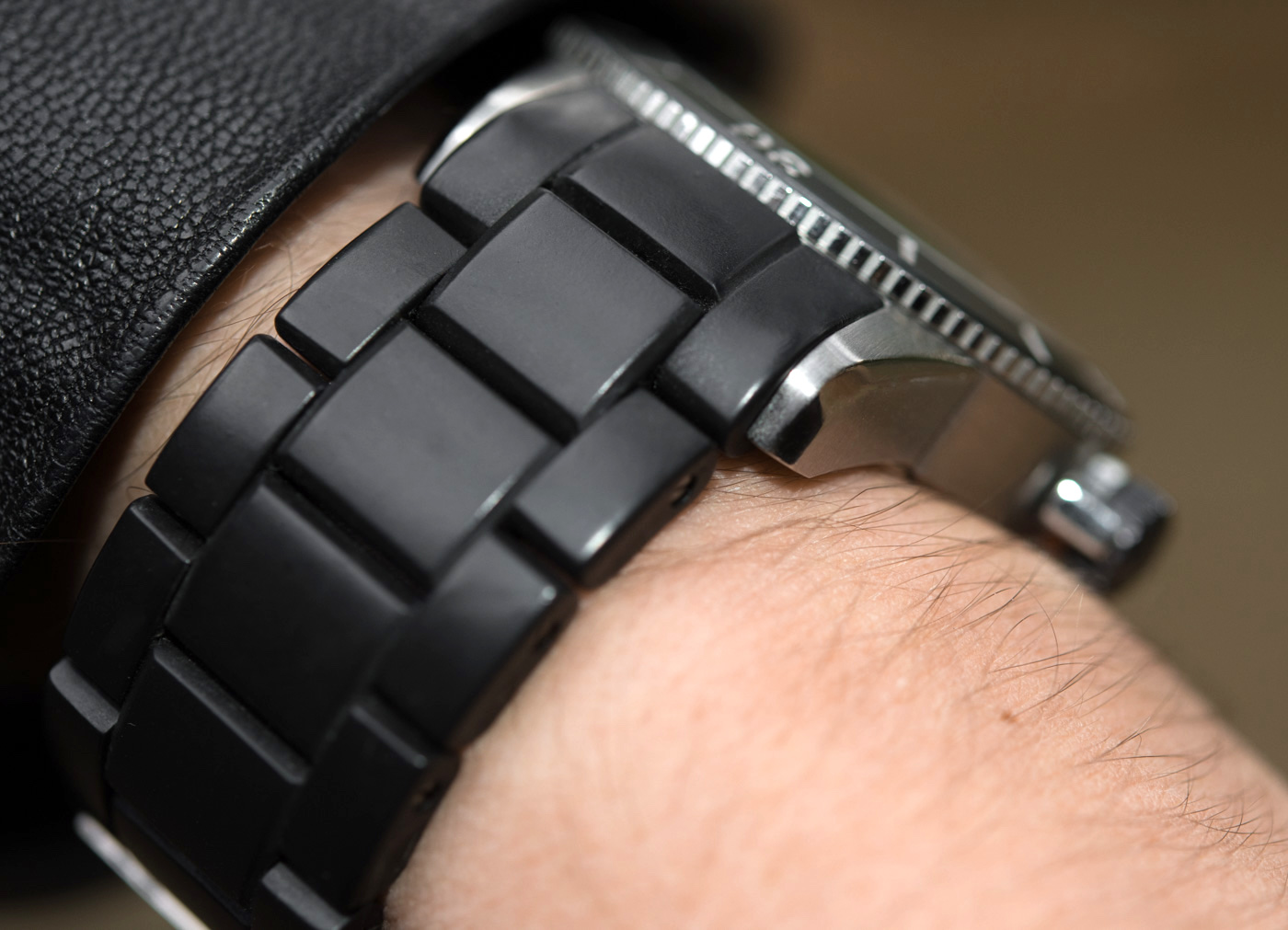
One Of The Best Bracelets
By contrast to the ceramic bezel, the articulated rubber bracelet has held up exceptionally well – not just on this, but pretty much every Navy SEALs automatic that I’ve checked out over the months of looking for one of these. Whereas I presume we are all familiar with the ease and unavoidable certainty of how a metal bracelet develops scratches, there are no noticeable signs of wear except for the end-link at the 6 o’clock position of the case. The rubber hasn’t faded, turned grey, show bruised or scratched areas and is not peeling anywhere. Furthermore, the surface of the links is smooth to the touch, I could best compare it to opaque glass – it isn’t sticky at all, like so many other rubber bracelets are. It never sticks to my clothes or whatever I rest my hand on, it doesn’t pick up lint or dust, and it doesn’t rub against textile or linen surfaces. It is a genuinely fantastic bracelet that I wouldn’t mind wearing on any other of my watches.
Better still, the bracelet articulates in a rather peculiar way. I’m not sure if it’s because of the steel cores of the individual links and steel screws that hold it together, or how the rubber sides rub against each other, but this is the single best bracelet when it comes to adapting to the shape of my wrist with ease and combining that with a certain rigidity. You can move the links and adjust their angles, but they have a bit of resistance to them, it’s almost as though you could fold it to a perfect, organic shape. The length and width of links are just ideal for a comfortable wearing experience, further enhanced by the combination of steeply angled lugs and a perfectly flat case profile and caseback.
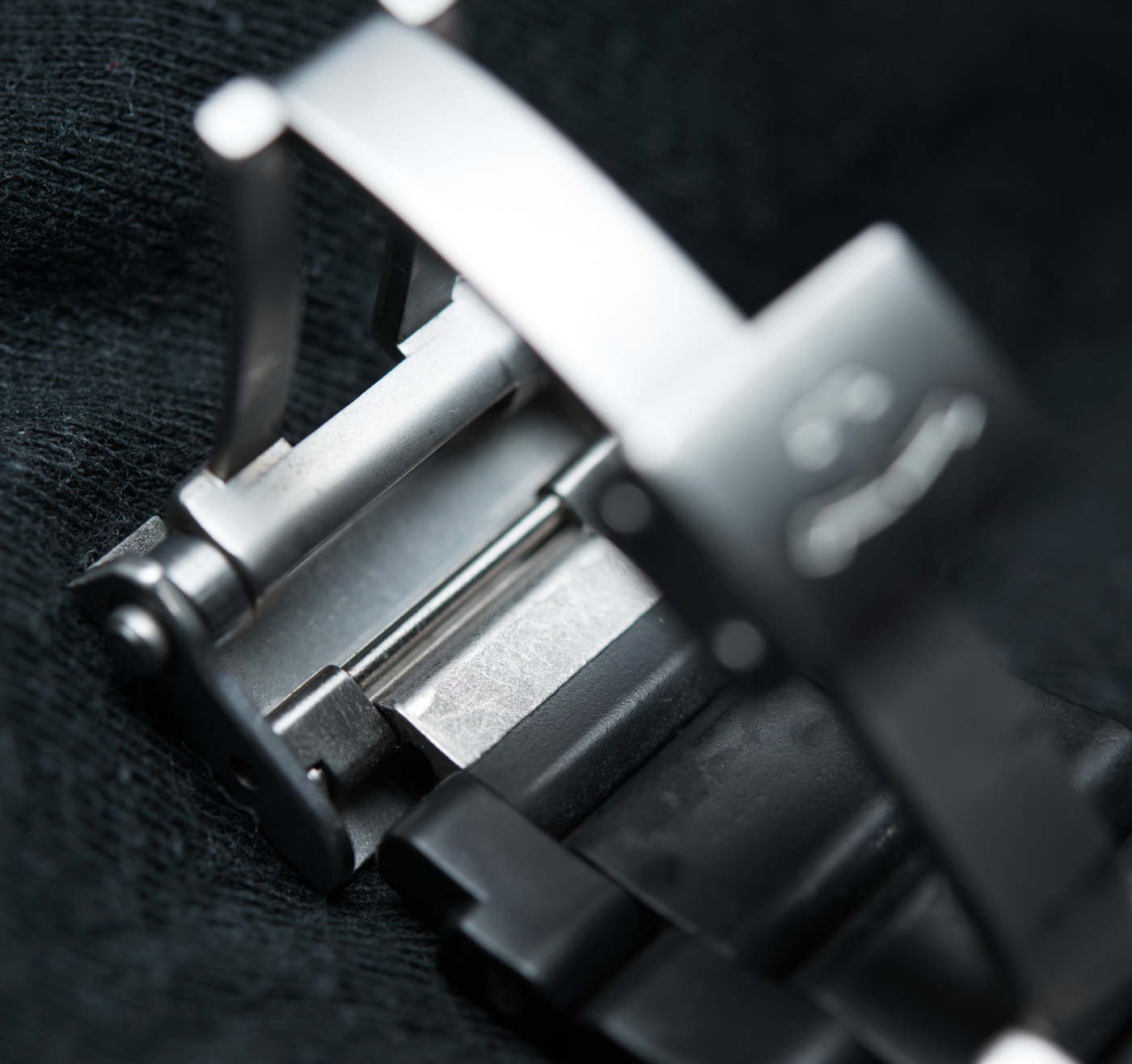
The icing on the cake is the quick micro-adjust integrated into the double folding clasp – which in itself is another testament to the engineers of old at Jaeger-LeCoultre. Both ends of the clasp have a half-a-link sized micro adjust that is a lot like Rolex’s Easylink system: you can fold it in or out, hence adjusting the length of the bracelet. However, JLC’s solution is superior to Rolex’s design in two ways, both of which I appreciate every single time that I wear this watch: first, this system gives you two adjustment points, so it’s easier to get a perfect fit; second, I figured out how to adjust each of these micro-adjusts with one hand, without having to take the watch off. Excellent stuff that makes a huge difference during everyday wear.
This is what I think is a big part of Jaeger-LeCoultre’s old charm: it keeps things super simple where it needs to be (3-link bracelet in a regular arrangement, with a simple double folding clasp), and complicates them where they make a world of a difference (with the integrated micro-adjust or the fantastic and to this day unique rubber compound for the base material).
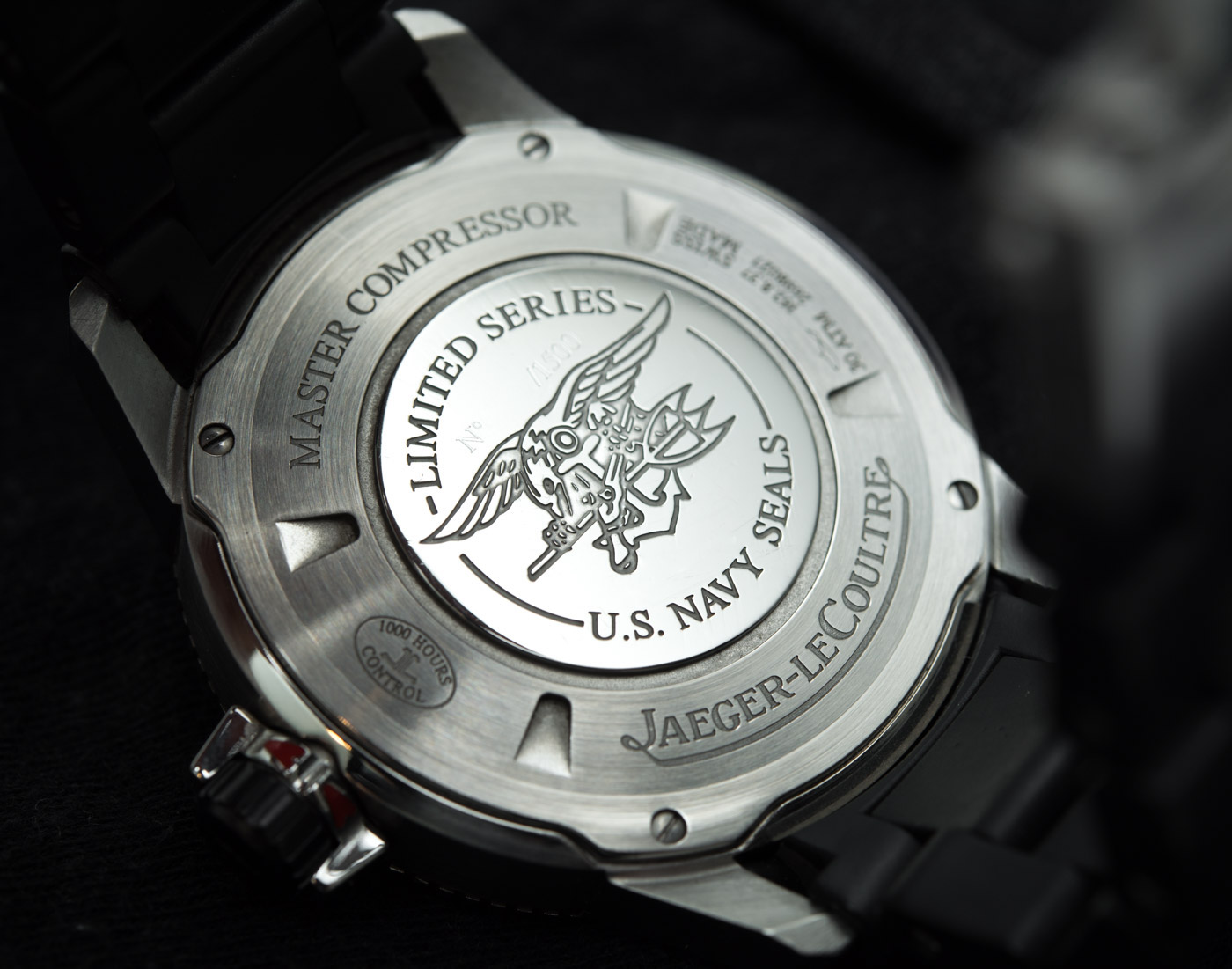
A Mediocre Movement With Redeeming Features
The movement is what I consider to be the weakest point of this watch. The Jaeger-LeCoultre Calibre 899 is a tiny, short-power reserve, complicated (and I presume consequently delicate) movement. It has its redeeming features, but let’s start with the negatives. It’s a small movement, coming in at only 26mm wide. That means it would fit a ladies watch that’s less than 34 millimeters wide. I have a strong presumption that JLC designed this to be a neat all-rounder movement that they can drop in every competitively priced watch with a date. It runs at 4Hz – yay – and has a power reserve of 43 hours – the very opposite of yay. I’d go so far as to say it’s more like 38-40 hours and what I can say from experience is that this is way shorter than what I’d need to be able to find this watch ticking away when I go back to pick it up. I’m adjusting the date and time constantly and that’s very frustrating. This was lame in 2010, but if JLC stayed on track, it would have given us a great movement with extended power reserve and perhaps other perks such as resistance to magnetic fields, better resistance to shocks, or whatever rocked their boat. The JLC Caliber 899 comprises 219 parts, a lot for a 3-hand movement, with uni-directional winding and a date.

